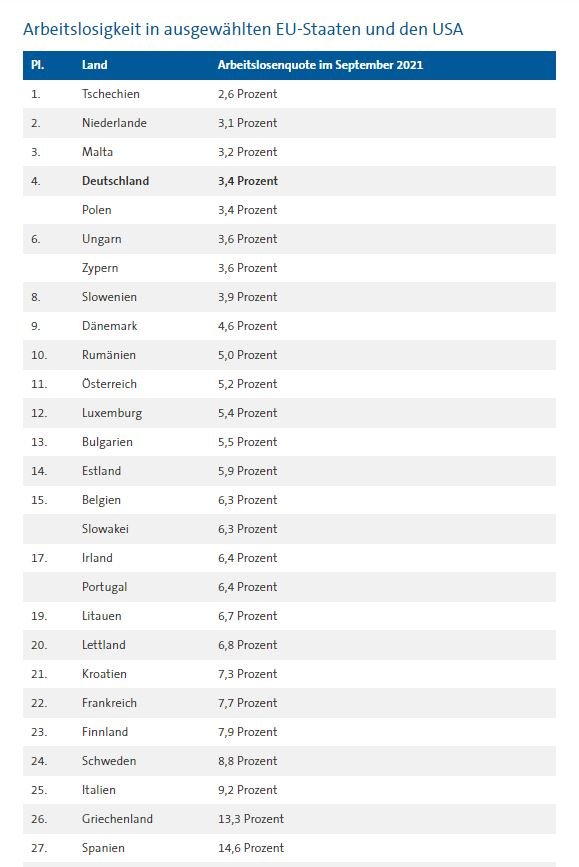German television has stated in the popular news programme Tagesschau that Spain is at the tail end of Europe in its employment statistics, with a higher percentage out of work than any other EU member state. The data, which contrasts with the triumphalism expressed by Spanish prime minister Pedro Sánchez on the country's economic recovery, is also in line with the doubts that exist in the Union on the labour market reform being prepared by the tension-fraught PSOE-Podemos government. Northern European countries suspect that the reform will not serve to significantly lower Spain's unemployment rate.

“What’s behind the unemployment rate,” headlines Tagesschau
The EU countries with the lowest unemployment rates are the Czech Republic, the Netherlands, Malta and Germany, according to Eurostat data. "If you live in the Czech Republic and lose your job, you shouldn't have much trouble finding another. With an unemployment rate of 2.6 percent, the lowest figure of any EU country in September, the country was at almost full employment, but the situation is completely different in Spain, where the unemployment rate was 14.6 percent at the end of September, and in the community of Andalusia, in the south, it even exceeded 20 per cent, higher than anywhere else in the EU," German TV explains.

Unemployment rates in the EU27
The strong contrasts in the unemployment rate in Spain are also seen in Italy. “The unemployment rate in the Bolzano region of South Tyrol is 3.8%, while in Calabria, in the south, it is 20.1%,” it recalls. In Germany there are also differences, but they are less significant. “While the unemployment rate is 2.5% in southwestern Swabia (Bavaria), it reaches 6.1% in Berlin,” adds the German news story.
According to German TV, in southern Europe the youth unemployment rate is terrifying. "The situation in Italy is especially dramatic. Almost 30 percent of those under 25 were registered as unemployed at the end of September, the same as a year ago. The rate is just as high in Spain, but there has been a significant improvement over the previous year, when the rate was 41 per cent,” it says.
Sánchez announced in May the "imminent" launch of a "shock plan against youth unemployment" that, he said, would make it possible to "provide training or facilitate the recruitment" of "more than a million young people" in the next three years.
The plan envisaged designating 600 million euros to the autonomous communities to finance training contracts to provide employment and educational opportunities for youths under thirty, and will also invest a further 765 million in "innovative programmmes" aimed at youth employment and the creation of initial professional experience, to encourage research or the improvement of training in areas "of the future" such as digitalization, the green economy, and the ecological transition.
The Spanish PM also announced that in addition to these two moves, his government would also renew the youth guarantee system to create "the youth guarantee plus", which he said would be a quality employment plan for young people with resources from the European Social Fund of about 3 billion euros between the years 2021 and 2027."
In the main photo, Pedro Sánchez talking to his first-ranked deputy PM, Nadia Calviño / EFE

